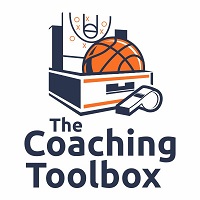
By Brendan Hall
Pay attention to the “special teams” of basketball, or you may end up paying the price.
In crunch time, the success of a single out-of-bounds play can make or break you. Compare it to, say, the kicking game in football, or the power play and penalty kill units in ice hockey. It might be overlooked at times, but if you’re not fundamentally sound in those areas, it can cost you dearly.
“They’re the special teams of basketball to me,” says O’Dea High School (Wash.) boys basketball assistant coach Ryland Brown, who typically coordinates the Fighting Irish’s out-of-bounds plays.
“It’s a big one for us. We try to score out of that, and then get into our offense afterwards. So it’s good to pick up on patterns for us, especially over the year seeing which ones work, which ones don’t work, do we need to scratch some out and keep some in.”
Whether you’re a nationally-ranked stalwart, or just looking to get off the mat, charting the success of your out of bounds plays can shore up some weaknesses — and even stoke the imagination.
How It Works
You can track sideline and baseline efficiencies in two ways.
One is overall efficiency, which assigns a simple “success” or “failure” to every play based on whether you scored.
On the other hand, points per sideline/baseline out of bounds, which aligns similarly to points per possession, takes into account the actual scoring.
How you’ll defend out-of-bounds plays might change from game to game. For instance, let’s say the team you’re about to face went 2 for 4 on baseline plays the previous game, both of them for 3-pointers. The game before that, this opponent went 3 for 5 on baseline inbounds, all of them layups. How will you prepare for this? Take a look at the tagged plays from the chart.
How Coaches Value It
Some highly-successful coaches, such as Beaver Dam (Wisc.) girls basketball coach Tim Chase, expand their playbook to as many as 40 different out-of-bounds plays as they understand what’s working for them and try to add new wrinkles. Others will look at patterns over the course of the season, hone in on the plays that work, and scrap the ones that aren’t bringing much value to the percentages.
Defensively, coaches find tremendous value in tracking their opponents’ tendencies on inbounds plays.
In the Seattle Metro League, one of the nation’s ripest high school leagues for talent, a good scouting workflow is crucial. For O’Dea High School, the defending Washington 3A state champion, this includes tracking how those top programs utilize their celebrated superstars when inbounding the ball.
What’s better than capping a great defensive stand in the half-court by stuffing what the opponent thought would be an easy basket from an out-of-bounds play underneath the hoop?
“It’s not one of the four factors, but that’s the No. 1 thing I always go to,” Brown says. “It always hurts to do a great job defensively, and then give up points out of bounds. So that’s one I always look at — did we win that area? To me that tells me a lot about whether we’re locked in and being alert.”
Some coaches use sideline plays to get into their offense, instead of creating a score, and thus pay special attention to how they perform on the baseline.
Lynden Christian (Wash.) girls basketball coach Brady Bomber recalls a recent game that came down to a sideline out-of-bounds play from their opponent, who was trailing by two points. Trusting their instincts — and the scouting report — the Lynx contested the shot enough at the rim to come down with the rebound and win in regulation as opposed to playing overtime.
“We’re really trying not to give up anything on that, and we’re going to try to win by getting a steal under the basket,” Bomber says. “So it’s great to be able to look at, okay, here are the seven baseline inbounds plays from the last game. Just to look through those and say, ‘Here are the three sets they run the most, and anything out of here our principles have to adapt.’ Those are big buckets, as you know.”
How You Can Use It
The Mendoza line for points per possession generally sits at 1.0 — anything above is great, anything below could use some fine-tuning. But we can set the bar lower on this metric when it comes to inbounding. A top college team will post a points per BLOB/SLOB around 1.2, for instance, but some of the best high school teams in the country operate closer to 0.9 and are completely fine.
But adding video to the mix will help you gain the most value from these percentages. Defensively, the more scout film you can acquire and run reports on, the more accurately you’ll be able to evaluate what a team’s best sets are, where they’re trending, and how you can make the proper adjustments.
Pairing this with shot charts and the Four Factors can help you understand star players’ tendencies on those plays. Does that scorer flare out? Do they spot up for a three? Do they get downhill?
When it comes to scouting your own team, knowing what works and what doesn’t work doesn’t just help you optimize your playbook. It can also give you ideas on how to prepare for the inevitable counters to your best plays. (Remember, your opponents are scouting you too.)
And maybe some new ideas will spring up. Could you set a screen for that streaky shooter off the bench? Or perhaps a player with a great rebounding percentage can be used a different way in the post. There’s limitless potential.
**
With interactive reports, seeing is believing. When you’re trying to learn how the numbers come together, having the associated video be a click away can make all the difference. Hudl Assist can help your team get the most out of their inbound data.






